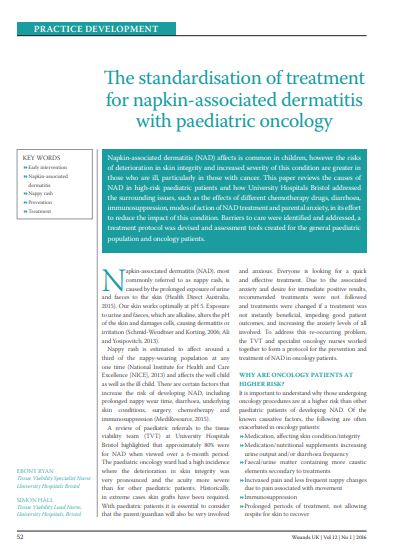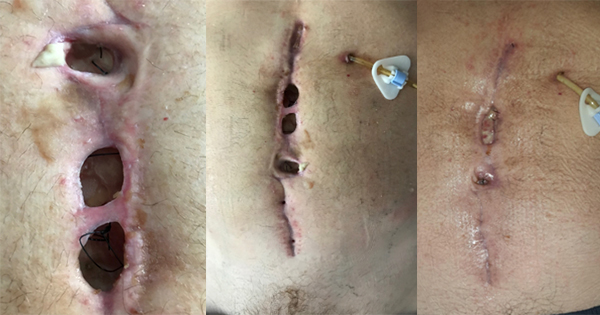Napkin-associated dermatitis (NAD) affects is common in children, however the risks of deterioration in skin integrity and increased severity of this condition are greater in those who are ill, particularly in those with cancer. This paper reviews the causes of NAD in high-risk paediatric patients and how University Hospitals Bristol addressed the surrounding issues, such as the effects of different chemotherapy drugs, diarrhoea, immunosuppression, modes of action of NAD treatment and parental anxiety, in its effort to reduce the impact of this condition. Barriers to care were identified and addressed, a treatment protocol was devised and assessment tools created for the general paediatric population and oncology patients.







